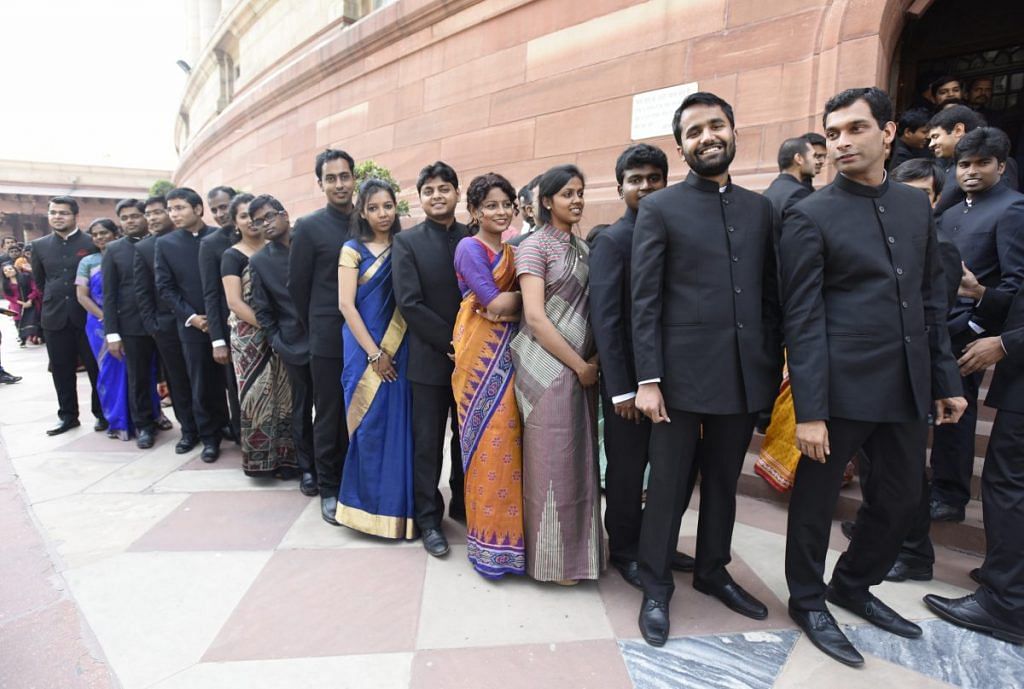NITI Aayog has recommended lowering the age limit for general category civil service aspirants to 27 from the current 32, and DoPT data for 2014-16 shows why.
New Delhi: Over the years, governments have ignored many panels’ recommendations to lower the entry age to the civil services. But the topic is now back in focus, with the NITI Aayog recommending the age for general category aspirants be brought down to 27.
An analysis of data available with the Department of Personnel and Training (DoPT) reveals that the average age of candidates joining the Indian Administrative Service (IAS) has been 27 over the period 2014-16. The IAS is the most preferred choice for civil service aspirants.
The data includes both general category and SC/ST candidates. If only the general category is considered, the average age goes down further.
At present, general category candidates up to the age of 32 can appear for the civil service exam, and are allowed six attempts. For SC/ST candidates, the age limit is 37, with an unlimited number of attempts.
Situation in the states
Looking at the state cadres individually, only Punjab and Nagaland have reported an average age above 30 — at 30 and 31 years respectively in 2016.
A senior IAS officer explained that in the case of Nagaland, this is because it’s not a preferred posting for officers.
Uttar Pradesh, which has one of the highest intakes into the IAS, has seen an average entry age of 26-27 years in the last three years, while for Madhya Pradesh, the average has been 26.
Over the years, the number of successful candidates in the age group 22-24 has also gone up manifold.
Also read: Older IAS entrants tend to have lower performance levels, says a global study
No changes expected in the near future
According to sources, the DoPT is aware of these trends. However, the Modi government has decided not to touch or act on the report of the B.S. Baswan panel it had constituted, until next year’s Lok Sabha elections.
It is also unlikely, therefore, that the government will undertake this or any other civil service reform suggested in the NITI Aayog’s report before the elections, fearing political ramifications which includes angering a large voter base of the country’s unemployed youth, which pins its hopes on the UPSC exam year after year, a senior government official said.
Another senior official pointed out that successive governments have developed cold feet when it came to implementing any major civil services reforms.
“Look at the idea of a cadre allocation after the foundation course or revamps in the civil services examinations recommended by various panels. No government wants to touch such drastic changes, especially if it is perceived to come with a cost,” the official said.
Also read: Why Niti Aayog’s suggestion to cut IAS, IPS entry age limit is unlikely to make headway
